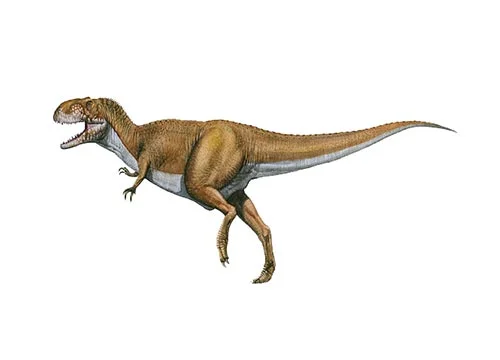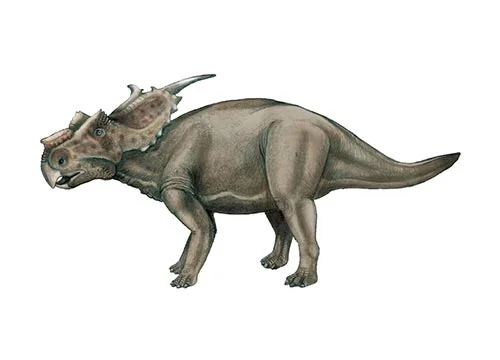Irritator (In reference to the ‘irritation’ of the palaeontologists)

Ih-re-tay-tor
D. M. Martill, A. R. I. Cruikshank, E. Frey, P. G. Small & M. Clarke - 1996
Carnivore
Estimated 6-8 meters long
Large Theropod
I. challengeri (type)
Brazil - probably the Santana Formation
Early Cretaceous, 110 million years ago
Irritator Facts
Irritator is an extinct genus of spinosaurid dinosaur that lived during the Early Cretaceous period, approximately 110 million years ago. The genus was named after the “irritation” it caused among paleontologists, due to the fact that the only known fossil specimen was partially destroyed by illegal fossil traders before it could be properly studied.
The original fossil specimen was discovered in Brazil in the early 1990s and sold to a commercial fossil dealer. When paleontologists were finally able to examine the specimen, they found that the skull had been partially broken and reshaped by the illegal fossil traders, presumably to increase its value on the black market. This made it difficult for scientists to determine the exact characteristics of the dinosaur and caused frustration and “irritation” among the scientific community.
Despite the damage to the skull, paleontologists were able to determine that Irritator was a large, carnivorous dinosaur with a long, narrow snout filled with sharp teeth. It was closely related to other spinosaurid dinosaurs, such as Spinosaurus and Baryonyx, and likely had a similar lifestyle, feeding on fish and other aquatic prey in the rivers and lakes of its environment.
In addition to its scientific importance, the discovery of Irritator has also shed light on the issue of illegal fossil trading and the need for better protection of important scientific specimens. The damage to the Irritator fossil is just one example of the many specimens that have been destroyed or lost due to illegal fossil trading, highlighting the need for stricter laws and regulations to protect these important scientific resources.
Overall, despite the frustration and “irritation” caused by the damage to the Irritator specimen, its discovery has provided valuable insights into the evolution and ecology of spinosaurid dinosaurs, and has highlighted the need for better protection and conservation of important fossil specimens.



